
The Battle of Caporetto was a battle on the Italian front of World War I.

Arditi was the name adopted by a Royal Italian Army elite special force of World War I. They and the opposing German Stormtroopers were the first modern shock troops, and they have been defined as "the most feared corps by opposing armies".
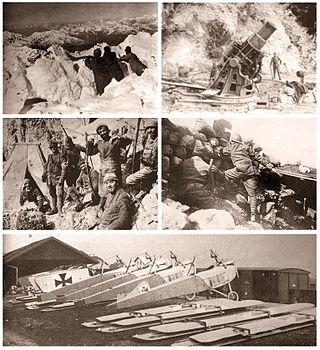
The Italian front,Alpine front involved a series of battles at the border between Austria-Hungary and Italy, fought between 1915 and 1918 in the course of World War I. Following secret promises made by the Allies in the 1915 Treaty of London, Italy entered the war aiming to annex the Austrian Littoral, northern Dalmatia, and the territories of present-day Trentino and South Tyrol. Although Italy had hoped to gain the territories with a surprise offensive, the front soon bogged down into trench warfare, similar to that on the Western Front in France, but at high altitudes and with very cold winters. Fighting along the front displaced much of the local population, and several thousand civilians died from malnutrition and illness in Italian and Austro-Hungarian refugee camps. The Allied victory at Vittorio Veneto, the disintegration of the Habsburg empire, and the Italian capture of Trento and Trieste ended the military operations in November 1918. The armistice of Villa Giusti entered into force on 4 November 1918, while Austria-Hungary no longer existed as a unified entity. Italy also refers to the Great War as the Fourth Italian War of Independence, which completed the last stage of Italian unification.
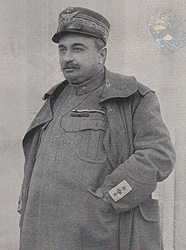
Luigi Capello was an Italian general, distinguished in both the Italo-Turkish War (1911–12) and World War I.
The Gold Medal of Military Valour is an Italian medal established on 21 May 1793 by King Victor Amadeus III of Sardinia for deeds of outstanding gallantry in war by junior officers and soldiers.

The Mechanized Brigade "Pinerolo" is a mechanized infantry brigade of the Italian Army, based in the southern region of Apulia. Carrying the name of the Piedmontese city of Pinerolo the brigade's coat of arms was modeled after the city's coat of arms. The brigade is part of the Division "Acqui".
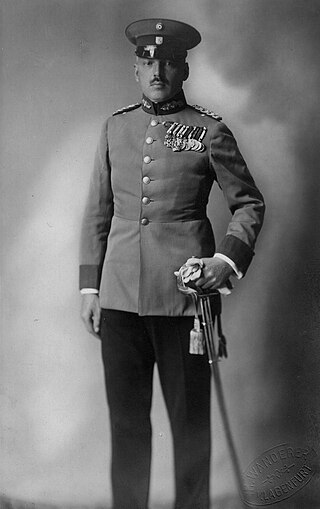
Eugen Bregant was major general, colonel of the infantry (alpini) regiment No.1 and an officer of the Austrian Armed Forces in the First Republic of Austria. His younger brother was the last Inspector of Cavalry of the Austrian army Camillo Bregant.

Giovanni Randaccio was an Italian soldier.
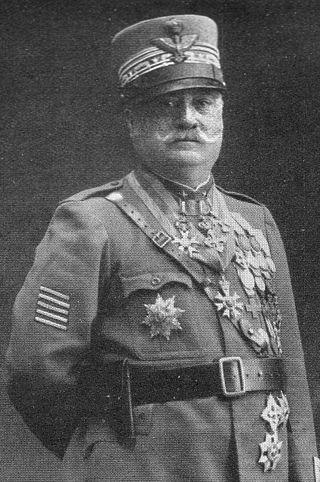
Maurizio Ferrante Gonzaga was an Italian general from the House of Gonzaga, decorated with the rank of officer in the Military Order of Savoy, with two gold medals, three silver and two bronze medals to military valor and the cross to the merit of war. He was prince of the Holy Roman Empire, marquis of Vescovato, marquis of Vodice, count of Villanova and Cassolnovo, Venetian patrician. He was also a senator of the Kingdom of Italy.

The 63rd Tank Regiment is an inactive tank regiment of the Italian Army based in Cordenons in Friuli Venezia Giulia. The regiment, like other Italian tank regiments, was originally part of the infantry, but on June 1, 1999, it was transferred to the cavalry. Operationally the regiment was last assigned to the Mechanized Brigade "Mantova".

Gustavo Fara was an Italian general and politician.

Marquess Achille D'Havet was an Italian general during World War II.

Carlo Rossi was an Italian general during World War II.
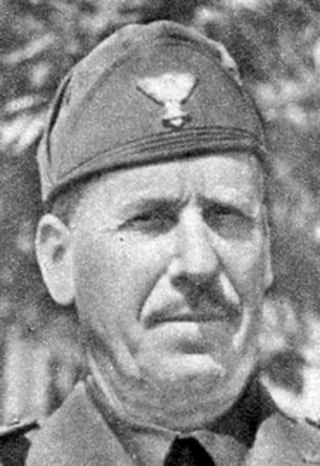
Archimede Mischi was an Italian Blackshirt general during World War II.
Carlo Melotti was an Italian general during World War II.

Ugo Gigliarelli Fiumi was an Italian general during World War II.
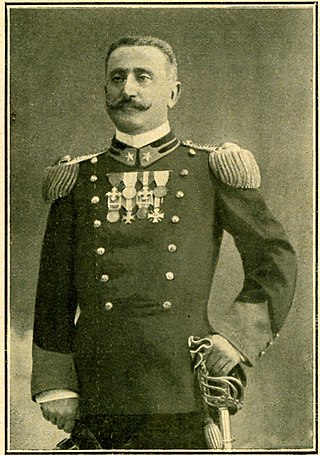
Luigi Agliardi was an Italian Major General during the late 19th and early 20th centuries. He was known for his extensive service, participating in the First Italo-Ethiopian War, the Boxer Rebellion and the Italo-Turkish War before his promotion to Major General in 1914. He was also known as a figure during the Red Week as he was taken prisoner by the socialists which caused a controversy within his military career.

The 120th Infantry Regiment "Emilia" is an inactive unit of the Italian Army last based in Ipplis. The regiment is named for the region of Emilia and part of the Italian Army's infantry arm.

The 73rd Infantry Regiment "Lombardia" is an inactive unit of the Italian Army last based in Arzene. The regiment is named for the region of Lombardy and part of the Italian Army's infantry arm.

The 67th Infantry Regiment "Legnano" is an inactive unit of the Italian Army last based in Solbiate Olona. Formed in 1862 and originally named for the city of Palermo the regiment is part of the Italian Army's infantry arm. Since 1939 the regiment is named for the medieval Battle of Legnano.


















